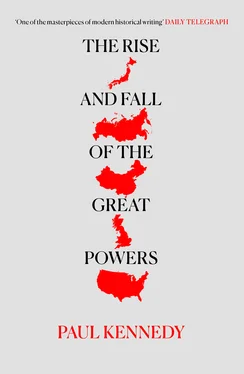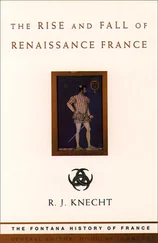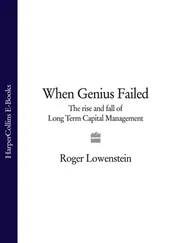Because France was the state which ultimately replaced Spain as the greatest military power, it has been natural for historians to focus upon the former’s many advantages. It would be wrong, however, to antedate the period of French predominance; throughout most of the years covered in this chapter, France looked – and was – decidedly weaker than its southern neighbour. In the few decades which followed the Hundred Years War, the consolidation of the crown’s territories vis-à-vis England, Burgundy, and Brittany, the habit of levying direct taxation (especially the taille , a poll tax), without application to the States General, the steady administrative work of the new secretaries of state, and the existence of a ‘royal’ army with a powerful artillery train made France appear to be a successful, unified, postfeudal monarchy. 54 Yet the very fragility of this structure was soon to be made clear. The Italian wars, besides repeatedly showing how short-lived and disastrous were the French efforts to gain influence in that peninsula (even when allied with Venice or the Turks), were also very expensive: it was not only the Habsburgs but also the French crown which had to declare bankruptcy in the fateful year of 1557. Well before that crash, and despite all the increase in the taille and in indirect taxes like the gabelle and customs, the French monarchy was already resorting to heavy borrowings from financiers at high rates of interest (10–16 per cent), and to dubious expedients like selling offices. Worse still, it was in France rather than Spain or England that religious rivalries interacted with the ambitions of the great noble houses to produce a bloody and long-lasting civil war. Far from being a great force in international affairs, France after 1560 threatened to become the new cockpit of Europe, perhaps to be divided permanently along religious borders as was to be the fate of the Netherlands and Germany. 55
Only after the accession of Henry of Navarre to the French throne as Henry IV (1589–1610), with his policies of internal compromise and external military actions against Spain, did matters improve; and the peace which he secured with Madrid in 1598 had the great advantage of maintaining France as an independent power. But it was a country severely weakened by civil war, brigandage, high prices, and interrupted trade and agriculture, and its fiscal system was in pieces. In 1596 the national debt was almost 300 million livres, and four-fifths of that year’s revenue of 31 million livres had already been assigned and alienated. 56 For a long time thereafter, France was a recuperating society. Yet its natural resources were, comparatively, immense. Its population of around sixteen million inhabitants was twice that of Spain and four times that of England. While it may not have been as advanced as the Netherlands, northern Italy, and the London region in urbanization, commerce, and finance, its agriculture was diversified and healthy, and the country normally enjoyed a food surplus. The latent wealth of France was clearly demonstrated in the early seventeenth century, when Henry IV’s great minister Sully was supervising the economy and state finances. Apart from the paulette (which was the sale of, and tax on, hereditary offices), Sully introduced no new fiscal devices; what he did do was to overhaul the tax-collecting machinery, flush out thousands of individuals illegally claiming exemption, recover crown lands and income, and renegotiate the interest rates on the national debt. Within a few years after 1600, the state’s budget was in balance. In addition, Sully – anticipating Louis XIV’s minister, Colbert – tried to aid industry and agriculture by various means: reducing the taille , building bridges, roads, and canals to assist the transport of goods, encouraging cloth production, setting up royal factories to produce luxury wares which would replace imports, and so on. Not all of these measures worked to the extent hoped for, but the contrast with Philip III’s Spain was a marked one. 57
It is difficult to say whether this work of recovery would have continued had not Henry IV been assassinated in 1610. What was clear was that none of the ‘new monarchies’ could properly function without adequate leadership, and between the time of Henry IV’s death and Richelieu’s consolidation of royal power in the 1630s, the internal politics of France, the disaffection of the Huguenots, and the nobility’s inclination toward intrigue once again weakened the country’s capacity to act as a European Great Power. Furthermore, when France eventually did engage openly in the Thirty Years War it was not, as some historians have tended to portray it, a unified, healthy power but a country still suffering from many of the old ailments. Aristocratic intrigue remained strong and was only to reach its peak in 1648–53; uprisings by the peasantry, by the unemployed urban workers, and by the Huguenots, together with the obstructionism of local officeholders, all interrupted the proper functioning of government; and the economy, affected by the general population decline, harsher climate, reduced agricultural output, and higher incidence of plagues which seems to have troubled much of Europe at this time, 58 was hardly in a position to finance a great war.
From 1635 onward, therefore, French taxes had to be increased by a variety of means: the sale of offices was accelerated; and the taille , having been reduced in earlier years, was raised so much that the annual yield from it had doubled by 1643. But even this could not cover the costs of the struggle against the Habsburgs, both the direct military burden of supporting an army of 150,000 men and the subsidies to allies. In 1643, the year of the great French military victory over Spain at Rocroi, government expenditure was almost double its income and Mazarin, Richelieu’s successor, had been reduced to even more desperate sales of government offices and an even stricter control of the taille , both of which were highly unpopular. It was no coincidence that the rebellion of 1648 began with a tax strike against Mazarin’s new fiscal measures, and that such unrest swiftly led to a loss in the government’s credit and to its reluctant declaration of bankruptcy. 59
Consequently, in the eleven years of Franco-Spanish warfare which remained after the general Peace of Westphalia in 1648, the two contestants resembled punch-drunk boxers, clinging to each other in a state of near-exhaustion to finish the other off. Each was suffering from domestic rebellion, widespread impoverishment, and dislike of the war, and was on the brink of financial collapse. It was true that, with generals like d’Enghien and Turenne and military reformers like Le Tellier, the French army was slowly emerging to be the greatest in Europe; but its naval power, built up by Richelieu, had swiftly disintegrated because of the demands of land warfare; 60 and the country still needed a solid economic base. In the event, it was France’s good fortune that England, resurgent in its naval and military power under Cromwell, elected to join the conflict, thereby finally tilting the balance against a distressed Spain. The Treaty of the Pyrenees which followed was symbolic less of the greatness of France than of the relative decline of its overstretched southern neighbour, which had fought on with remarkable tenacity. 61
In other words, each of the European powers possessed a mixture of strengths and weaknesses, and the real need was to prevent the latter from outweighing the former. This was certainly true of the ‘flank’ powers in the west and north, England and Sweden, whose interventions helped to check Habsburg ambitions on several critical occasions. It was hardly the case, for example, that England stood poised and well prepared for a continental conflict during these 140 years. The key to the English recovery following the Wars of the Roses had been Henry VII’s concentration upon domestic stability and financial prudence, at least after the peace with France in 1492. By cutting down on his own expenses, paying off his debts, and encouraging the wool trade, fishing, and commerce in general, the first Tudor monarch provided a much-needed breathing space for a country hit by civil war and unrest; the natural productivity of agriculture, the flourishing cloth trade to the Low Countries, the increasing use of the rich offshore fishing grounds, and the general bustle of coastal trade did the rest. In the area of national finances, the king’s recovery of crown lands and seizure of those belonging to rebels and rival contenders to the throne, the customs yield from growing trade, and the profits from the Star Chamber and other courts all combined to produce a healthy balance. 62
Читать дальше












